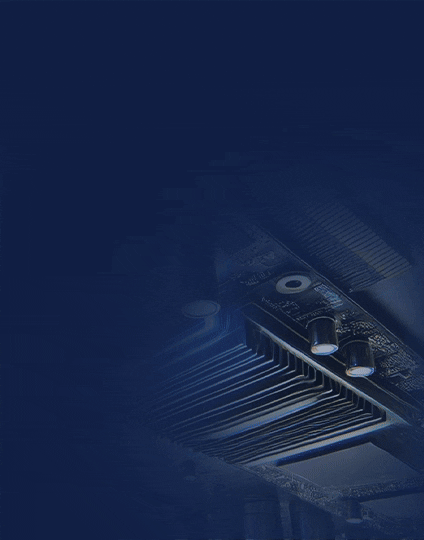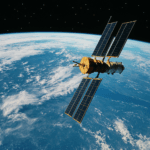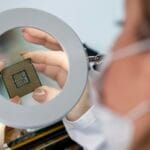Autonomous drones and robotics are transforming industries ranging from logistics and agriculture to defense and industrial automation. These systems demand real-time responsiveness, high reliability, and low-latency control to process sensor data, execute complex algorithms, and interact safely with their environment.
Traditional microcontrollers or general-purpose CPUs often struggle to meet these stringent requirements, especially when multiple sensors, cameras, or actuators must be coordinated simultaneously.
Field Programmable Gate Arrays have emerged as a critical technology for autonomous control systems, offering deterministic performance, parallelism, and flexibility tailored for real-time robotics applications.
This blog explores how FPGAs power autonomous drones and robotic control systems, their architecture advantages, design methodologies, real-world use cases, and practical considerations for engineers.

Why FPGAs Are Ideal for Autonomous Control
They offer several advantages that make them well-suited for control systems in autonomous drones and robotics:
Parallel Processing: FPGAs can process multiple sensor inputs and control loops simultaneously, enabling faster reaction times.
Deterministic Low Latency: Hardware-level execution ensures predictable control loop timing, critical for flight stability and robotic precision.
Customizable Interfaces: Support for high-speed interfaces such as SPI, I2C, UART, CAN, and PCIe allows seamless integration with sensors, motors, and communication modules.
Reconfigurability: It can be reprogrammed to adapt to new control algorithms or sensor upgrades without changing the hardware.
Integration of Processing and Control: They combine high-speed computation with real-time motor and actuator control, reducing system complexity and weight.
These capabilities allow autonomous drones and robots to respond to dynamic environments safely and efficiently.

FPGA Architecture for Autonomous Control
They provide a flexible architecture suitable for real-time sensor fusion, decision-making, and actuator control:
Logic Cells and LUTs: Implement custom logic for sensor data processing, control algorithms, and safety checks.
DSP Slices: Execute complex computations such as PID control loops, Kalman filters, and matrix multiplications efficiently.
Embedded Memory: Store sensor data, control parameters, and intermediate computations with low latency.
High-Speed I/O: Connect cameras, LiDAR, radar, IMUs, GPS modules, and actuators for synchronous data acquisition.
Clock Management: Multiple PLLs and clock domains allow synchronized operation of sensors, control loops, and communication modules.
This combination of parallelism, processing power, and flexible I/O enables high-speed, deterministic control for autonomous systems.

Core Control Tasks Implemented on FPGAs
Flight and Motion Control
- Stabilization Algorithms: PID, adaptive, and model-predictive controllers executed in parallel for roll, pitch, yaw, and altitude stabilization.
- Trajectory Planning: Real-time path computation to navigate obstacles and maintain optimized flight paths.
- Motor Control: Direct Pulse Width Modulation (PWM) generation and closed-loop motor feedback for brushless DC and stepper motors.
Sensor Fusion
These combine data from multiple sensors such as LiDAR, cameras, IMUs, and ultrasonic sensors to provide accurate real-time environmental awareness. This includes:
- Filtering noise and outliers
- Synchronizing asynchronous sensor data
- Computing position, velocity, and orientation estimates for autonomous navigation
Obstacle Detection and Avoidance
- Parallel processing of camera and LiDAR data for collision detection
- Real-time implementation of object recognition, segmentation, and distance estimation algorithms
- Low-latency integration with flight or motion control loops to execute evasive maneuvers
Path Planning and AI Inference
- FPGA acceleration of neural network inference for image recognition, semantic segmentation, or reinforcement learning tasks
- High-speed evaluation of control policies for decision-making in dynamic environments
Communication and Telemetry
- Real-time data encoding/decoding for telemetry and control links
- Implementation of low-latency wireless protocols for swarm robotics or multi-drone coordination
Real-World Use Cases
Autonomous Drones
- Delivery Drones: FPGAs handle real-time flight stabilization, GPS navigation, obstacle detection, and dynamic path planning simultaneously.
- Agricultural Drones: Sensor fusion of multispectral cameras and LiDAR enables precise crop monitoring, spraying, and surveying.
- Inspection Drones: Real-time processing of high-resolution imaging for infrastructure inspections, such as bridges or pipelines, with immediate anomaly detection.
Industrial Robotics
- Collaborative Robots (Cobots): FPGAs execute multi-sensor fusion, real-time motion planning, and safety interlocks for humans working alongside robots.
- Automated Guided Vehicles (AGVs): FPGA-based control enables high-speed navigation, obstacle avoidance, and fleet coordination in warehouses and factories.
- Robotic Arms: Deterministic FPGA control ensures precise actuation and repeatable movements for assembly, welding, or pick-and-place operations.
Defense and Aerospace Robotics
- Autonomous UAVs: FPGAs enable low-latency sensor fusion, target tracking, and adaptive flight control in UAVs operating in complex environments.
- Space Robotics: Rovers and manipulators rely on FPGA-based control systems to execute autonomous operations in radiation-prone and communication-delayed environments.
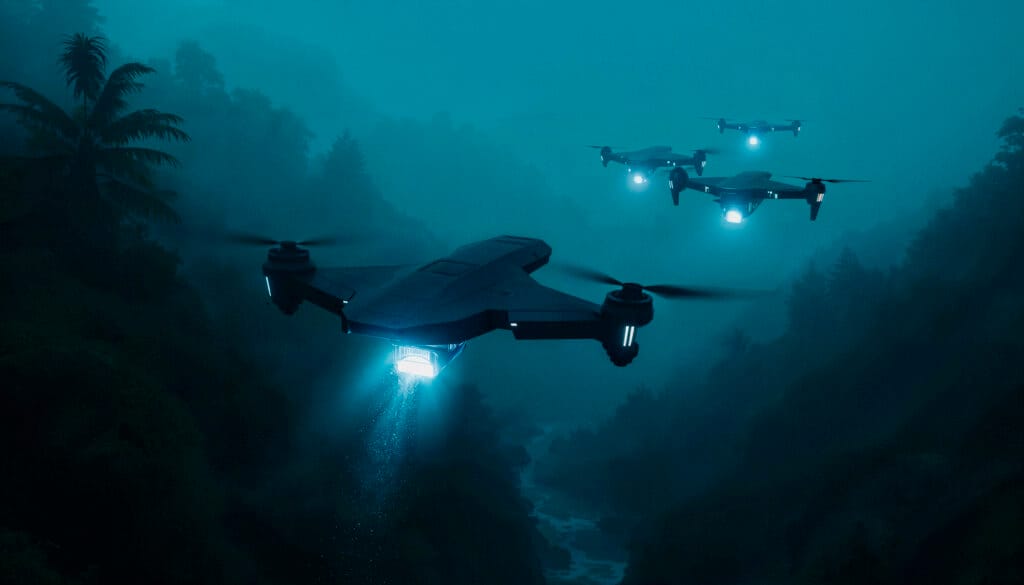
FPGA Design Methodology for Autonomous Control Systems
Algorithm Profiling: Evaluate flight control, path planning, and sensor fusion algorithms to identify parallelism and latency requirements.
Fixed-Point Implementation: Convert floating-point computations to fixed-point arithmetic for FPGA efficiency while maintaining precision.
Pipeline and Parallelization: Structure control loops, sensor processing, and AI inference pipelines for simultaneous execution.
Hardware Mapping: Optimize use of DSP slices, LUTs, and BRAM for computation-heavy algorithms.
Simulation and Verification: Functional and timing simulations ensure correctness and deterministic timing before deployment.
Hardware-in-the-Loop Testing: Validate FPGA control systems with real sensors, actuators, and communication interfaces under operational conditions.
Optimization and Iteration: Refine latency, throughput, and resource utilization for maximum efficiency

Challenges in FPGA-Based Autonomous Control
Development Complexity: Requires expertise in HDL, control theory, and real-time systems.
Resource Management: Efficient use of DSP slices, LUTs, and memory is critical to support multiple sensors and control loops.
Integration: FPGAs must interface seamlessly with sensors, actuators, and communication modules.
Debugging and Verification: Real-time multi-loop systems require robust simulation and hardware-in-the-loop testing for reliability.
Power Constraints: Drones and mobile robots require optimized power management to balance performance and flight/runtime endurance.

Emerging Trends
AI-Accelerated Flight Control: FPGA-based acceleration of neural networks for adaptive navigation, perception, and decision-making.
Swarm Robotics: Parallel FPGA processing enables coordination and communication across multiple drones or robots.
Edge AI Integration: Real-time AI inference directly on FPGA control systems reduces reliance on cloud processing.
Autonomous Vehicle Systems: FPGA-based sensor fusion and control pipelines are being applied to self-driving cars, UAVs, and industrial AGVs.
Dynamic Reconfiguration: FPGAs supporting partial reconfiguration allow adaptation of control pipelines to mission-specific requirements.
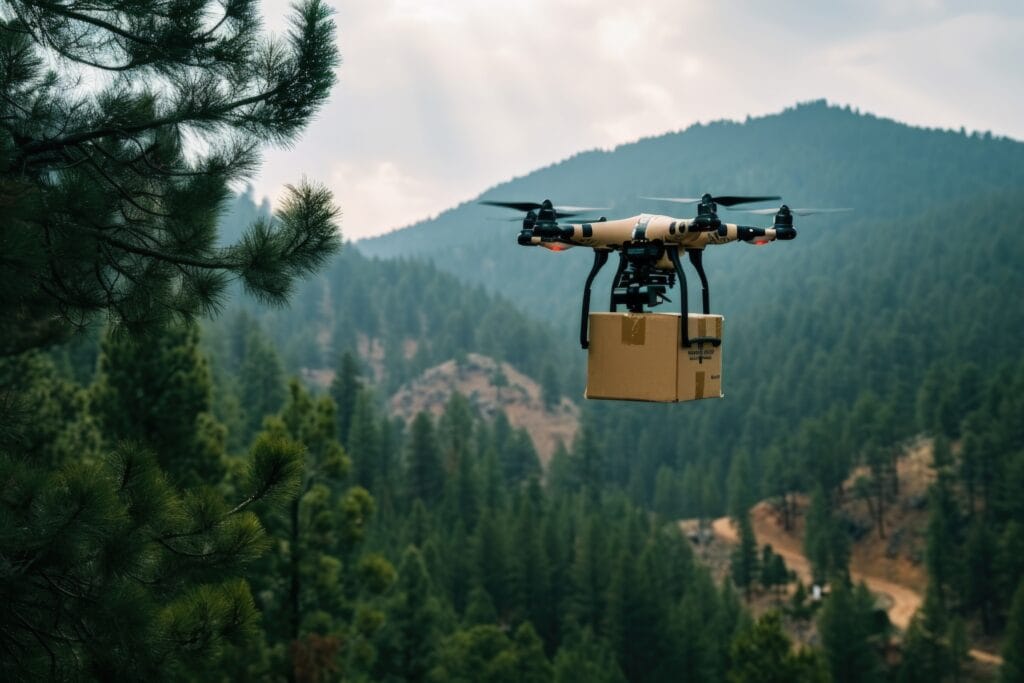
Conclusion
FPGAs are central to the evolution of autonomous drones and robotics, providing deterministic, parallel, and low-latency control systems capable of processing multiple sensors, executing AI inference, and coordinating complex actuator behaviors in real time.
From agricultural drones and delivery UAVs to industrial robotics and defense applications, FPGA-based control systems enable safe, reliable, and high-performance autonomous operation.
By adopting a systematic FPGA design methodology, including fixed-point implementation, parallel pipelines, and hardware-in-the-loop verification, engineers can develop robust control systems that meet the demanding real-time requirements of modern autonomous platforms.
FPGAs are not just a component, they are the backbone of high-speed, intelligent, and adaptive autonomous systems.



![What is FPGA Introduction to FPGA Basics [2023] computer-chip-dark-background-with-word-intel-it](https://fpgainsights.com/wp-content/uploads/2023/06/computer-chip-dark-background-with-word-intel-it-300x171.jpg)

